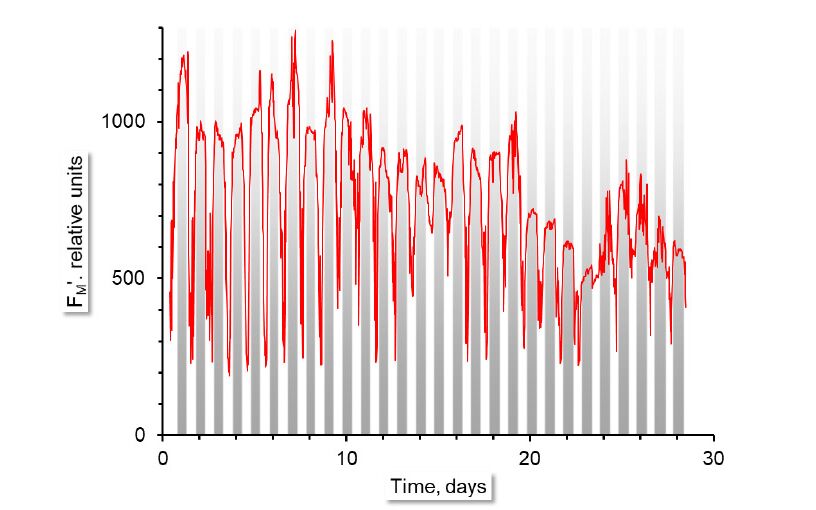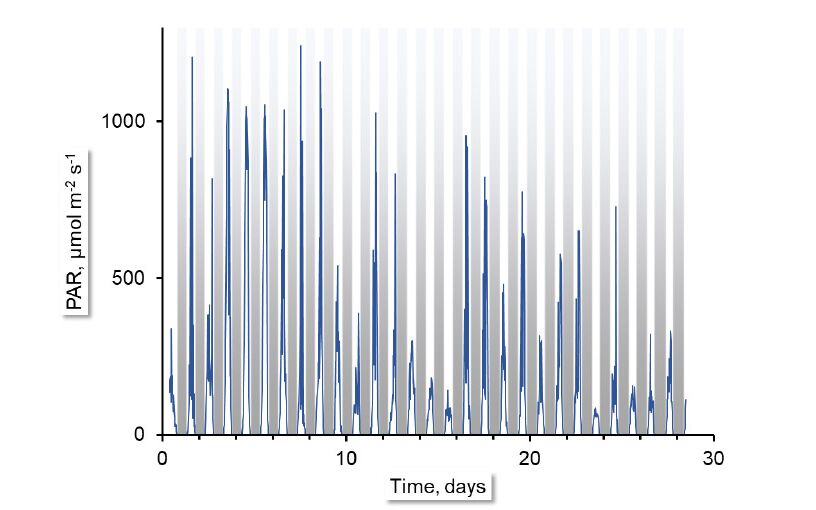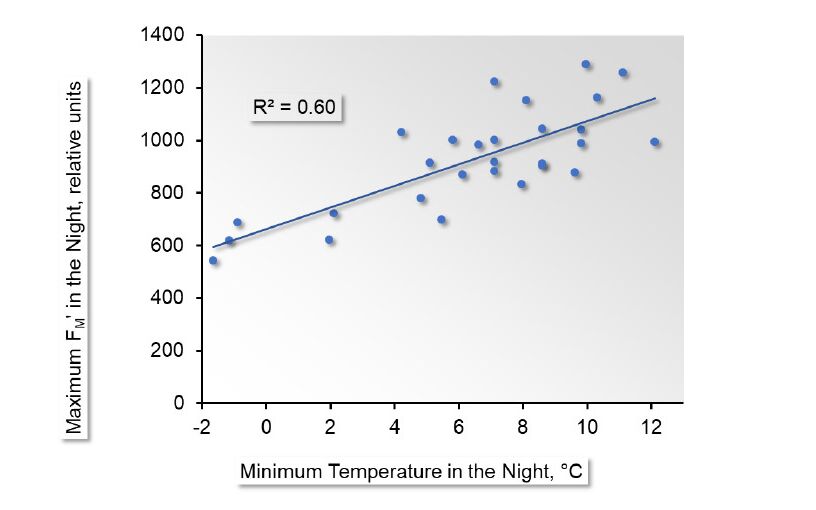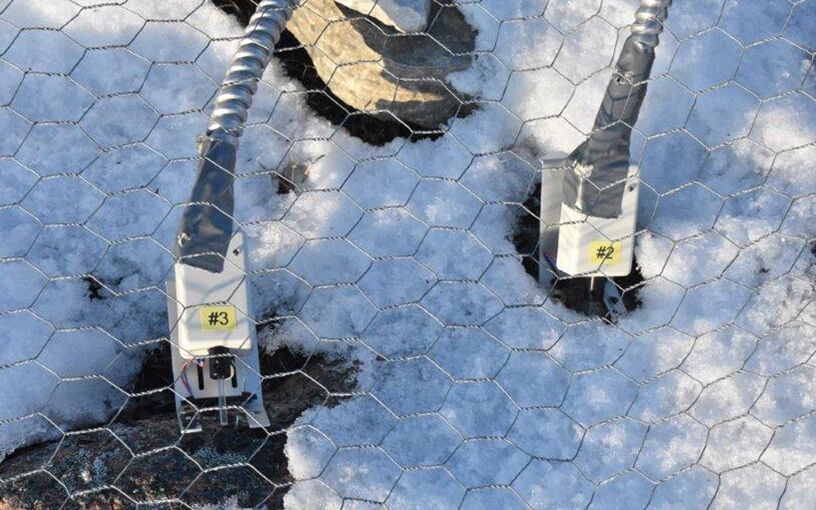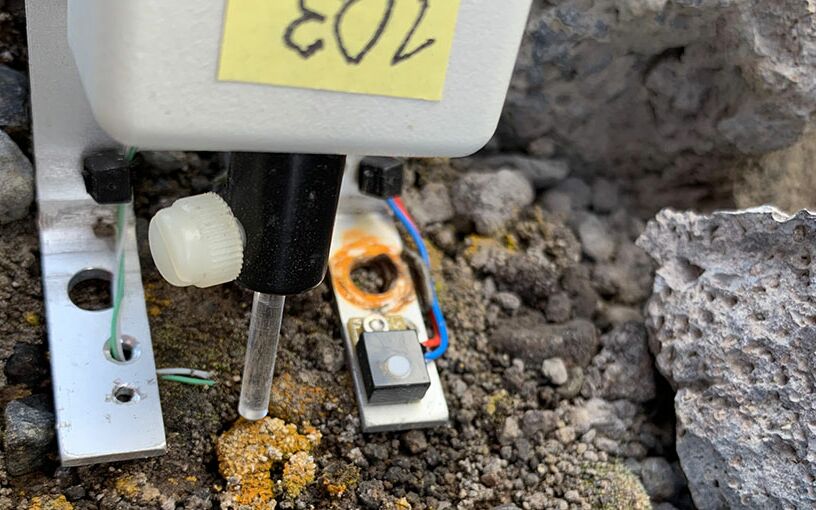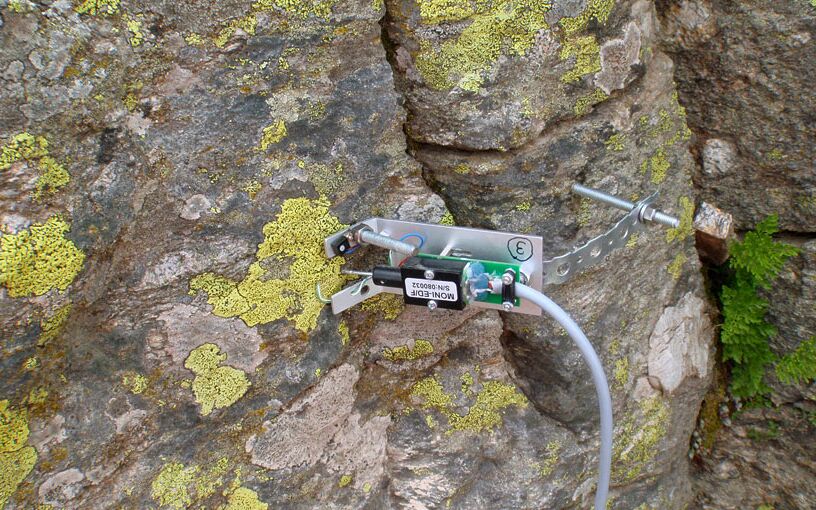MICRO-PAM
Version:
Compact Fluorometer for Long-term Monitoring of Photosynthesis
Cold-acclimation of Leaves
A MICRO-PAM system was used to monitor acclimation of photosystem II to decreasing temperature in fall. Outdoor experiments were performed with leaves from holly (Ilex aquifolium) from October 9 to November 6, 2019. Position: latitude: 49.656564 | longitude: 11.09793.
During the monitoring period, the maximum FM’ showed a tendency to decrease and exhibited lowest values between days 20 and 24 (Fig. 1). On average, the PAR was higher at the initial part of the experiment compared to the final part, but a decrease comparable to the FM’ was not observed (Fig. 2).
Temperature showed a tendency to decrease. As observed for FM’, minimum values were recorded between das 20 and 24 (Fig. 3).
Analyzing the relationship between maximum FM’ and minimum temperatures by linear regression yielded a coefficient of determination of 0.6 (Fig. 4), suggesting that the two parameters are related to each other. Sustained non-photochemical quenching might be a factor involved in this fluorescence/temperature relationship.
Lichen Photosynthesis (MICRO-PAM Prototype)
Prototypes of the measuring heads MICRO-HEAD/3B have been successfully employed to monitor photosynthesis of lichens growing under extreme climate conditions. Experimental sites include Tierra del Fuego and the Antarctica.
The poster below describes the experimental setup and shows long-term data of PAR, temperature, photosystem II yield and calculated electron transport rate.
